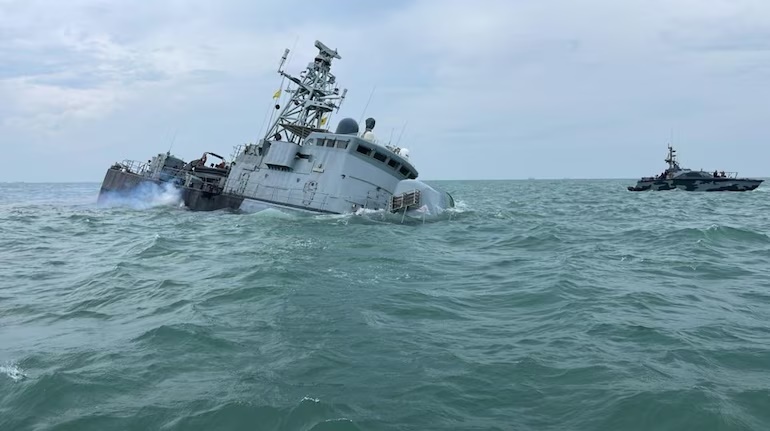Malaysian authorities launched salvage operations Monday for a 45-year-old fast attack naval ship that sank after colliding with an unidentified underwater object off the southern coast of Johor state. The incident has raised concerns about the aging Malaysian naval fleet and prompted a review of older vessels.
The Malaysian Navy reported that the KD Pendekar, a 260-ton vessel commissioned in 1979, began taking on water through a leak in its engine room on Sunday. Despite the crew’s efforts to repair the damage, the ship sank hours later. All 39 crew members were safely evacuated without injuries.

“The leak is believed to be caused by the ship hitting an underwater object,” the navy stated, adding that an investigation into the cause of the incident has been initiated. Salvage operations are currently underway to recover the sunken vessel.
In response to the incident, Defense Minister Mohamed Khaled Nordin ordered an immediate inspection of all navy vessels over 40 years old, which constitute at least one-third of Malaysia’s naval fleet. The KD Pendekar, built by Karlskrona Varvet Shipyard in Sweden, was among the older ships in active service.
“We do not deny that (some of) our ships are old but that is not likely to be one of the causes … and the important thing is that thankfully no lives were lost,” Khaled told the Malay-language Harian Metro newspaper. He emphasized that the age of the vessel may not have been the primary factor in the incident.
The sinking has highlighted ongoing efforts to modernize Malaysia’s naval capabilities. Khaled revealed that a fleet modernization program is currently in progress, which includes the construction of new littoral combat ships. The first of these vessels is scheduled to be commissioned in 2026.
Additionally, the defense ministry is in negotiations to purchase littoral mission ships from Turkey, further demonstrating Malaysia’s commitment to upgrading its naval forces.

The incident has sparked discussions about maritime safety and the challenges faced by navies operating aging fleets. It also underscores the importance of regular maintenance and timely replacement of older vessels to ensure operational readiness and crew safety.
As investigations continue, the Malaysian Navy will likely face scrutiny over its maintenance practices and the overall condition of its fleet. The outcome of this incident may influence future decisions regarding naval procurement and the acceleration of fleet modernization efforts.
The sinking of the KD Pendekar serves as a reminder of the risks associated with naval operations and the critical need for constant vigilance and modernization in maritime defense capabilities. As Malaysia works to salvage the sunken vessel and determine the exact cause of the accident, the incident is likely to have lasting implications for the country’s naval strategy and fleet management practices.


